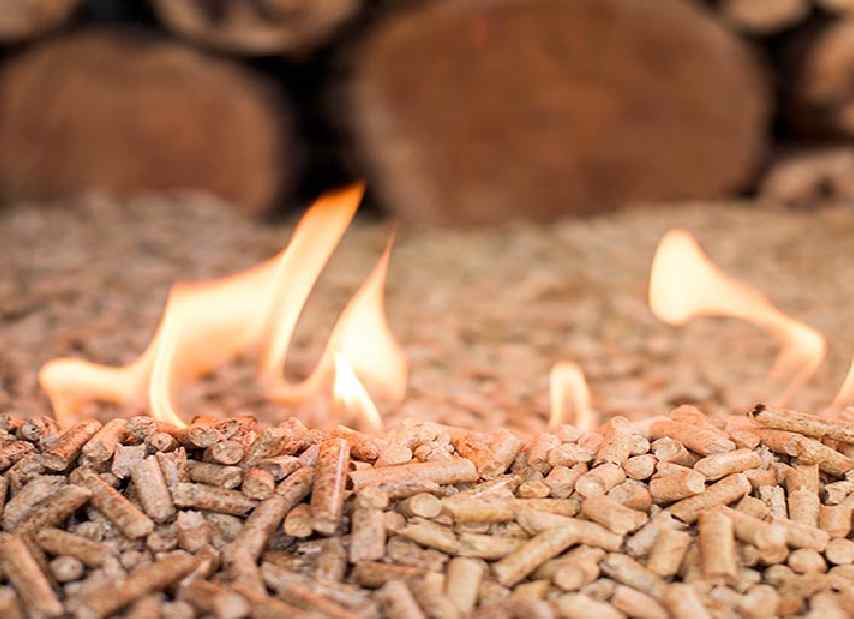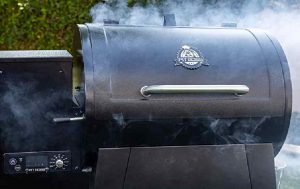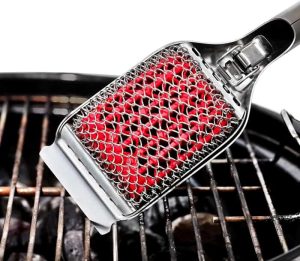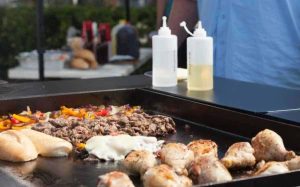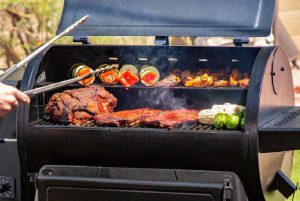Finding yourself with an empty pellet hopper during a smoking session might seem like a disaster, but don’t worry it’s totally manageable.
In this article, we’ll provide you with the know-how to tackle this challenging scenario, ensuring that your scrumptious smoked meal stays on course without skipping a beat.
- Don’t Panic: Steps to Take When Your Pellet Grill Runs Out of Pellets Mid-Smoke
- Possible Explanations for Smokers Running Out of Pellets While Cooking
- Can You Add Pellets During Smoking?
- How Long Will Your Pellets Last?
Don’t Panic: Steps to Take When Your Pellet Grill Runs Out of Pellets Mid-Smoke
Don’t fret if your pellet grill runs out of pellets mid-cooking session; we’ve got you covered with a simple step-by-step process to get your grill back up and running in no time.
Step 1: Save the Food If the grill temperature starts to drop, quickly remove your food from the grill and wrap it in foil or place it on a pan. Keep it warm in an oven on low heat.
Step 2: Refill the Hopper Top up the hopper with enough pellets to finish your cook.
Step 3: Let the Grill Cool Down Turn off the grill and allow it to cool down. Remove the grate, grease tray, heat deflector, and any other components covering the firepot, using proper grill tools and fireproof gloves.
Step 4: Inspect the Firepot Check if the firepot is full of pellets. If so, clean them out.
Step 5: Prime the Firepot Turn the grill back on and set it to High Heat or Prime mode. Wait until pellets start to appear in the firepot.
Step 6: Shut down and Reassemble Turn off the grill and replace the heat deflector, grease tray, and grates.
Step 7: Restart and Adjust Temperature Turn the grill back on and set it to your desired cooking temperature. Wait for the grill to reach the set temperature before moving to the next step.
Step 8: Resume Cooking Once the grill is back at your preferred temperature, transfer your food from the oven back to the grill and continue cooking.
This process applies to any pellet grill brand, including Traeger, Pit Boss, Camp Chef, Weber, and others.
While it may seem time-consuming, following these steps ensure your grill gets back on track and your food is cooked to perfection.
Related >> Can You Use a Pellet Smoker Without Pellets?
Possible Explanations for Smokers Running Out of Pellets While Cooking
Sometimes your smoker might run out of pellets while cooking a delicious brisket, and you wonder what went wrong. There could be several explanations for this problem, so let’s explore some possibilities.
1. Insufficient Pellet Supply
Before starting the cooking process, ensure that you have enough pellets in the hopper to last the entire duration of the smoke.
Typically, you’ll need about 1 pound of pellets per hour. If your hopper capacity is small, you might need to replenish the pellets during the smoke. Keep an eye on the hopper and refill it when necessary.
2. High Smoker Temperature
Monitor the smoker’s temperature while cooking the brisket. If the temperature is higher than your set range, the fire will burn hotter and consume pellets faster than expected.
Additionally, high temperatures can negatively affect the quality of your brisket, making the bark too tough and the meat dry and overcooked.
Check the temperature gauge every hour or two to ensure it stays within the desired range.
3. Tunneling
Tunneling occurs when the pellets in the hopper create a funnel-shaped void in the center while being fed into the grill, leaving a significant amount of pellets on the sidewalls.
Although modern grills have better designs to prevent this issue, it can still happen occasionally.
To avoid tunneling, follow these tips:
- Check the pellet levels and stir the pellets with a long wooden spoon while keeping your hand away from the hopper’s bottom.
- Inspect the hopper for any structural damage that might cause tunneling, and contact customer service if you notice any issues.
- Clean the hopper regularly to remove excess sawdust or blockages that can increase the likelihood of tunneling.
By addressing these possible explanations, you can ensure your smoker has enough pellets to keep the fire going and cook your brisket to perfection.
Can You Add Pellets During Smoking?
Absolutely! Prevention is crucial for your pellet grill to run out of pellets. If you check the hopper and see that the pellet level is running low, it’s time to take action.
You can safely add more pellets to your grill while it’s in use, as long as the hopper and auger aren’t entirely empty.
If there are still some pellets visible at the bottom of the hopper, feel free to top it off with more.
Even if you don’t see any pellets at the bottom of the hopper, there could still be some in the auger, especially if the grill’s temperature remains steady. In this situation, adding pellets is still a good idea.
However, if you add pellets too late and there’s a considerable gap in the auger, your grill may initiate its automated shutdown cycle.
Don’t worry adding pellets is still fine, but you’ll need to follow the restart procedure to get your grill back up and running.
How Long Will Your Pellets Last?
The lifespan of your wood pellets depends on various factors.
Here’s what to consider:
Smoker temperature:
Higher temperatures require more fuel, causing the pellets to burn faster.
For high-heat cooking, such as grilling, you’ll need about 2 pounds of pellets per hour.
For low-temperature cooking (225-275°F), like when preparing brisket, expect to use around 1 pound per hour.
Pellet quality:
The brand of pellets affects their burn rate. Lower-priced options might contain oils that cause faster combustion and have less density, making them burn more quickly.
Storage conditions:
Keep your wood pellets in a cool, dry place to ensure optimal burning. Wet wood doesn’t burn as effectively as dry wood, and this applies to pellets too.
Smoker efficiency:
Smokers with poor heat retention will use up pellets faster than well-insulated ones, as they need to work harder to maintain the correct temperature.
Weather conditions:
Cold or windy weather can also increase pellet consumption. To minimize this, consider investing in a grill cover to shield your smoker from the elements.
Related >> How Long Do Pellets Last? (Burn Rate Chart)
Final Thoughts
Fear not if your pellet grill unexpectedly runs out of pellets while you’re smoking with the guidance provided in this article, you’ll be able to handle the situation like a seasoned pitmaster and have your delicious meal back on track in a jiffy.
Greetings! I’m Chad, a 43-year-old barbecue aficionado hailing from the beautiful state of Texas. I’m thrilled to invite you on a culinary journey as we explore the art of grilling and smoking together. Through this blog, I aim to ignite your passion for barbecue by offering:
Scrumptious, time-honored BBQ recipes passed down through generations, guaranteed to tantalize your taste buds.
Expert guidance on mastering the grill, smoker, and diverse cooking techniques to elevate your barbecue game.
Recommendations on choosing the perfect tools and equipment tailored to your grilling requirements.
An inside look at the latest trends, innovations, and advancements in the ever-evolving world of barbecue.

